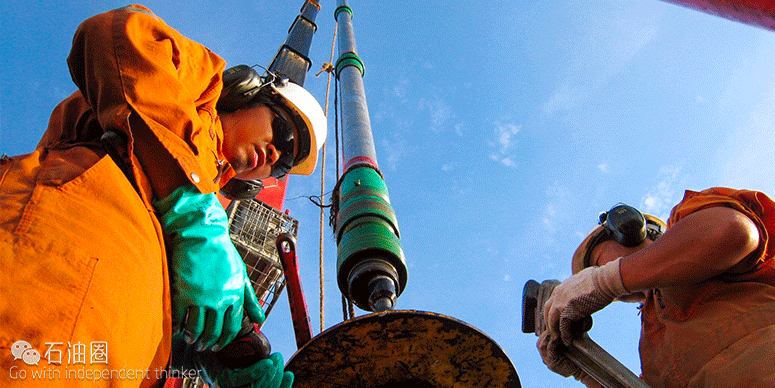Following the drilling of a new well, a completion assembly will be installed to allow production to start. The completion design is typically split into a lower completion and an upper completion. The
lower completion is normally placed across the production zone and is most often hung-off by a liner hanger. The upper completion consists of all parts above the liner hanger to allow oil and gas to be produced in a safe manner by ensuring barrier control.
When a well has been producing for an extended period of time, there are several issues/problems that can arise with the well completion design which can cause failures that might stop the ability to produce the well in a safe way, such as, sand production, scale deposit, corrosion, Tubing Retrievable Surface Controlled Subsurface Safety Valve (TRSCSSV) issues, gas-lift valve issues, leaking PBR, or a leaking production packer. To allow the continuation of production, the issue in the well must be corrected.
The ideal solution is to pull the completion assembly out of the well and install a brand new one. However, this is often associated with extremely high cost so if a cost-effective, safe, and efficient solution can be utilized, then this can extend the life of the well completion and production can continue. This article will focus on how a range of problems with the upper completion design can be repaired.
Production tubing leaks
When faced with a leak in the production tubing, due to severe corrosion or tubing joints not being correctly torqued, these leaks can be managed by installing a retrievable straddle assembly.
The Interwell Anchored Production Straddle (APS) is designed with high expansion and effective through-bore in mind, when developing specific solutions for production control challenges.These straddle assemblies can be used as a one-run or a multi-run stackable system. The choice of straddle system depends on how long the section to be isolated is, compared to how much available rig-up height there is on surface when installing the equipment inside a wireline lubricator.
Many completion designs include gas-lift valves due to the well needing assistance to achieve required lifting speed for fluid. These valves are operated by pumping gas down the production tubing-casing annulus. If these valves leak, get damaged/ stuck, or are placed at wrong depth this could lead to a costly loss of production. The gas-lift valve is placed inside a side-pocket mandrel. To change these out, a special designed kick-over tool is used both for retrieval and re-installing.
If such a valve is stuck due to debris or scale then an APS straddle system can be set across the side-pocket mandrel with a new gas-lift valve between the two sealing elements. For cases where the side pocket mandrels are placed at wrong depths, a tubing punch can be carried out to create a point of communication between the tubing and the annulus. By isolating this point with a gas lift straddle, gas can be injected into the annulus and into the production tubing via the gas lift valve located in the straddle.
The APS packer is designed with high expansion and effective through-bore in mind when developing specific solutions for production control challenges.
Using Straddle AssembliesWell completions are sometimes fitted with a PBR installed just above the production packer when extreme movement is expected in the production tubing.
Should the seals inside the PBR start to leak, there will be a barrier issue to the annulus.
A retrievable APS assembly can then be set across the original PBR to isolate the leak. Between the two sealing elements, a new PBR is fitted so that the old and new PBR can move together.
The production packer is placed at the bottom of the production tubing to isolate reservoir fluid from entering the production tubing to casing annulus. Should this start leaking, there will be a barrier issue that will have to be
repaired. Again, a retrievable APS assembly can be set across the production packer. This is done by placing the lower packer element inside the lower completion (liner) and the top element inside the upper completion.
This way the installed straddle packer will function as the new production packer.The described issues are very common in wells that have been in production for some time. For certain wells, these issues can arise early in the well life while for other wells it can take several years before issues are encountered. It goes without saying that if all of the above challenges can be repaired with a wireline operation instead of killing the well, pulling the entire upper completion, or conducting a side track, then a considerable amount of money can be saved. This is especially so on subsea wells where such problems can be carried out by the use of a Light Well Intervention Vessel instead of using a drilling rig.
The main conclusion is that wireline intervention can repair and fix damaged well completions in a safe, cost-effective, and efficient way to extend the life of the producing well.
Product Application
The APS can be used in temporary or permanent applications, and is equipped with high expansion bi-directional seal, and anchor elements that can be set/retrieved in cross flow.
Product Benefits
Designed to meet the requirements of high expansion and effective through-bore, the standard straddle size is also ISO V0 approved.
Product Features
- Modular design for various applications on-site
- Ideal for workover applications
- Slim design (small OD/large ID)
- Excellent candidate for wells with scale build-up
- Equalize and retrieve with std GS in a single operation (no prong needed) ? Can be run on slickline, e-line, CT and pipe
- Other sizes available upon request

 石油圈
石油圈

